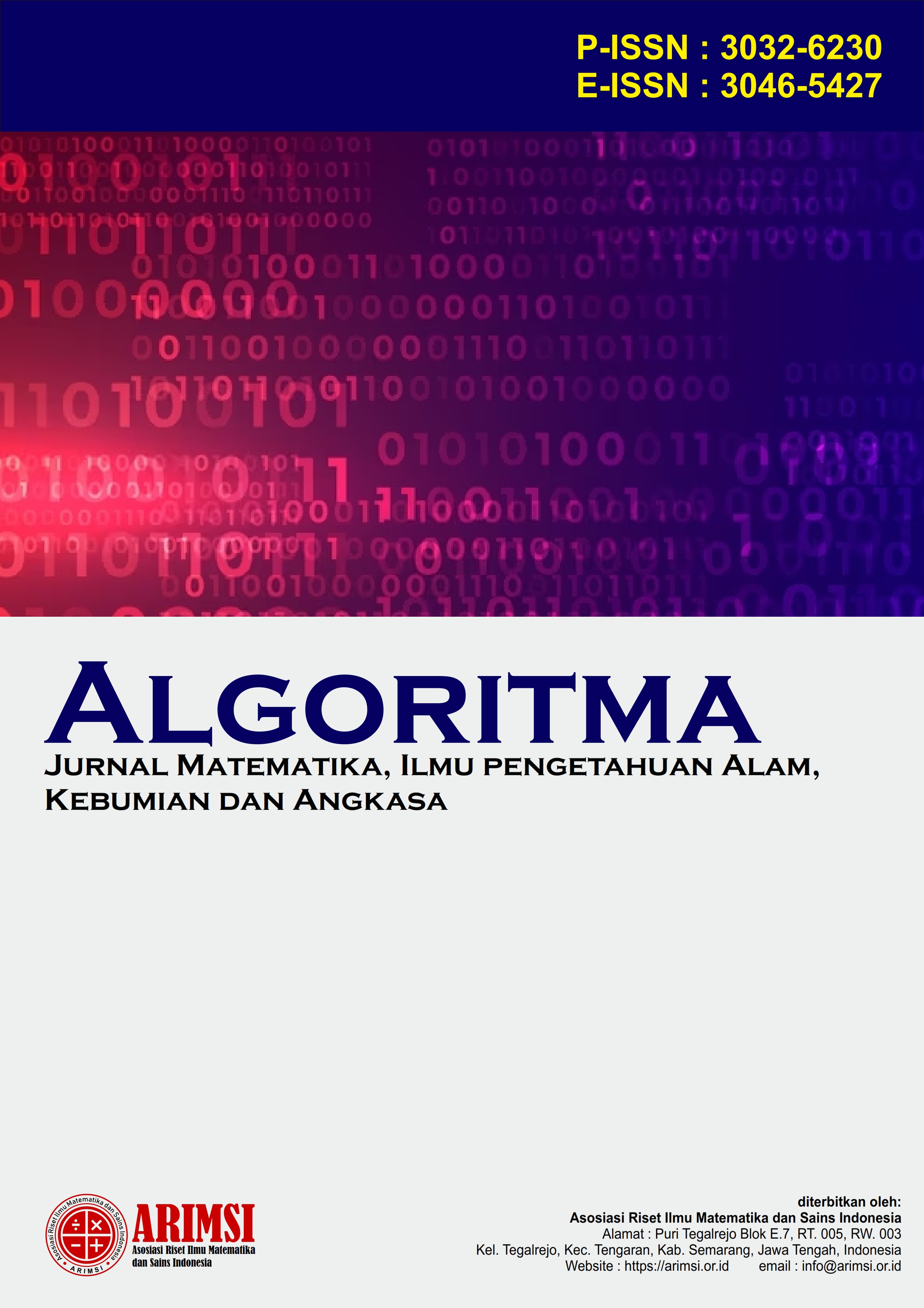Penerapan Algoritma CNN Untuk Mendeteksi Tulisan Tangan Angka Romawi dengan Augmentasi Data
DOI:
https://doi.org/10.62383/algoritma.v2i3.69Keywords:
Convolutional Neural Network, Handwriting Detection, Roman Numerals, Data Augmentation, Image Processing, Model AccuracyAbstract
This research aims to develop and apply a Convolutional Neural Network (CNN) algorithm to detect handwritten Roman numerals. Handwriting recognition is a classic challenge in the fields of image processing and machine learning, especially for less common characters such as Roman numerals. In this research, we use data augmentation techniques to increase the diversity and number of datasets used in model training, which is expected to increase model accuracy and generalization. The dataset used consists of 1,120 images for testing and 280 images for validation, each of which is divided into 14 classes of Roman numerals I, II, III, IV, V, VI, VII, VIII, IX, X, L, C, D , and M. Image data was created directly using simple software, namely Paint version 6.3. This research uses the Python programming language and Google Colab as a computing platform. Model training was carried out for 300 epochs and showed significant accuracy in the 150th to 300th iteration. The results at the 300th epoch show an accuracy of 0.9607 and a loss of 0.1162. The implementation of this algorithm shows significant potential in practical applications, such as in the fields of education and historical documentation. The conclusion of this research is that data augmentation is an effective technique to improve the performance of CNN models in detecting handwritten Roman numerals.
Downloads
References
M. M. Saufi, M. A. Zamanhuri, N. Mohammad dan Z. Ibrahim, “Deep Learning for Roman Handwritten Character Recognition,” Indonesian Journal of Electrical Engineering and Computer Science, pp. 455-460, 2018.
T. M. Iqbal, “Huruf Hijaiyah: 30 Huruf Arab yang Luar Biasa [PENJELASAN LENGKAP],” 2020. [Online], https://hasana.id/hurufhijaiyah/, tanggal akses: 04 Oktober 2020.
A. El-sawy, M. Loey, and H. El-Bakry, “Arabic Handwritten Characters Recognition using Convolutional Neural Network,” WSEAS Trans. Comput. Res., 2017.
F. A. Hadi, T. A. Budi dan K. N. Ramadhani, “Pengenalan Angka Tulisan Tangan Dengan Penerapan Freeman Chain Code yang Dimodifikasi,” eProceeding of Engineering, pp. 6101, 2015.
C. K. Dewa, A. L. Fadhilah and Afiahayati, "Convolutional Neural Networks for Handwritten Javanese Character Recognition," IJCCS (Indonesian Journal of Computing and Cybernetics Systems), Vol. 12, No. 1, p. 83~94, 2018.
A. R. Widiarti and K. Pinaryanto, "Segmentasi Citra Huruf Daun Lontar," LPPM, Yogyakarta, 2019.
P. P. Nair, A. James dan C. Saravanan, “Malayalam Handwritten Character Recognition Using Convolutional Neural Network,” International Conference on Inventive Communication and Computational Technologies, pp. 278-281, 2017
K. Wu, E. Otoo dan K. Suzuki, “Optimizing two-pass connectedcomponent labeling algorithms,” Springer, pp. 117-135, 2009.
F. F. Maulana dan N. Rochmawati, “Klasifikasi Citra Buah Menggunakan Convolutional Neural Network,” JINACS, pp. 104-108, 2019.
A. R. Widiarti and C. K. Adi, "Clustering Balinese Script Image in Palm Leaf Using Hierarchical K-Means Algorithm," in International Conference on Innovation in Science and Technology (ICIST 2020), Semarang, 2020.
I. S. Hanindria and Hendry, "Pengklasifikasian Aksara Jawa Metode Convolutional Neural Network," JATISI (Jurnal Teknik Informatika dan Sistem Informasi), Vol. 9, No. 3, pp. 2727 - 2736, 2022.
Downloads
Published
How to Cite
Issue
Section
License
Copyright (c) 2024 Algoritma : Jurnal Matematika, Ilmu pengetahuan Alam, Kebumian dan Angkasa

This work is licensed under a Creative Commons Attribution-ShareAlike 4.0 International License.





